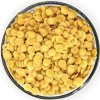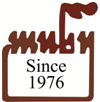Candelilla wax Manufacturers, with SDS GHS MSDS Sheet |
Supplier, Manufacturer, Exporter of Candelilla wax, Muby Chemicals of Mubychem Group, established in 1976, is the original manufacturers of Specialty Chemicals, Pharmaceutical Excipient, Fragrance Food & Flavor chemicals, Reagent Grade Chemicals, Shale Gas Fracturing Chemicals in India. Mubychem Group has several manufacturing facilities spread across Western India and world wide contacts and toll manufacturers. We are exporting globally to countries like USA, Canada, Europe, UAE, South Africa, Tanzania, Kenya, Egypt, Nigeria, Cameroon, Uganda, Turkey, Mexico, Brazil, Chile, Argentina, Dubai, Korea, Vietnam, Thailand, Malaysia, Indonesia, Australia, China, Germany, France, Italy Portugal, Bangladesh, etc. The products are offered as per required specifications and in correct shape and size in mm or meshs or microns as specified by the buyer. The participating units have one or more accreditations like FDA - cGMP and GLP approval, ISO-9001 Certified, "REACH" Registered, ISO-14001, ISO/IEC 17025, ISO-22000, FSSC 22000, ISO 45001, Kosher Certified, Halal Certified, HACCP, FSSAI. We offer Commercial Pure & IP BP EP Ph Eur USP NF JP FCC Food Grade Analytical Reagent Grades of Chemicals |
| Bookmark this Web Site -- or -- Email This Page Info to a Colleague or Yourself |
Search our website here:







Candelilla wax: CAS Number: 8006-44-8, EINECS EC Number: 232-347-0, Molecular Formula: yy, Molecular Weight: yy, HS Code ---**
How big is your requirement or how small
We serve it all.
Specifications, Safety Data Sheet, Manufacturing process details, Wholesale retail buy sell prices, Uses etc available on line in these pages for Candelilla wax.
For SDS MSDS Sheet Click
SDS MSDS Sheet of Candelilla wax Manufacturers
Candelilla wax
Pure Suppliers

Candelilla wax is a natural vegetable wax extracted from the candelilla plant; This unique vegetable wax helps provide gloss and lubricity (slip) to lip balms and lotion bars. Candelilla can be used as a substitute for beeswax or carnauba wax in food. Candelilla wax is a plant-based wax and a suitable vegan alternative to beeswax. It makes an excellent DIY skincare ingredient. It is mostly used mixed with other waxes to harden them without raising their melting point. As a food additive, candelilla wax has the E number E 902 and is used as a glazing agent. It also finds use in cosmetic industry, as a component of lip balms and lotion bars. One of its major uses is as a binder for chewing gums.
General Properties and Specifications of Candelilla wax:
Appearance: Yellowish-brown, hard, brittle, aromatic, and opaque to translucent.
Melting point: 68.5C -72.5C.
Boiling point: > 240C.
Relative density: around 0.99
Solubility in water: Insoluble.
Specifications of Candelilla Wax USP Grade:
CAS 8006-44-8.
DEFINITION
Candelilla Wax is the purified wax obtained from the leaves of the candelilla plant, Euphorbia antisyphilitica Zucc.
IDENTIFICATION
A. Infrared Absorption.
B. It meets the requirements of the test in Specific Tests for Melting Range or Temperature .
Limit of Lead:
To pass the test.
Acceptance criteria: The color of the Sample solution does not exceed that in the control, corresponding to NMT 3 microg/g.
Melting Range or Temperature: 68.5C –72.5C.
Fats and Fixed Oils, Acid Value:
Sample: 3 g
Analysis: Weigh the Sample in a 250-mL flask, add 50 mL of a mixture of isopropyl alcohol and toluene (5:4), attach the flask to a reflux condenser, and boil gently until the wax is completely dissolved. Examine the solution: no insoluble particles are present. Remove the flask from the condenser, add 1 mL of phenolphthalein, and titrate immediately with 0.5 N alcoholic potassium hydroxide to a faint, reddish-yellow color. [Note— Do not allow the solution to cool; titrate at a warm temperature after refluxing. After the titration, reserve the solution for use in the test for Saponification Value. ]
Calculate the acid value as the number of mg of potassium hydroxide required to neutralize the free acids in 1 g of Candelilla Wax.
Acceptance criteria: 12–22
Fats and Fixed Oils, Saponification Value:
Sample solution: Use the solution from the test for Acid Value.
Analysis: To the Sample solution add 15.0 mL of 0.5 N alcoholic potassium hydroxide, reflux for 3–4 h, and titrate the excess alkali with 0.5 N hydrochloric acid to a yellow-amber color. Perform a blank determination under the same conditions. The saponification value is the summation of the ester value so obtained and the acid value obtained above.
Acceptance criteria: 43–65
Packaging and Storage: Preserve in well-closed containers. No storage requirements specified.
Specifications of Candelilla Wax FCC Food Grade:
INS: 902 CAS: 8006-44-8
DESCRIPTION
Candelilla Wax occurs as a hard, yellow-brown, opaque to translucent wax. It is a purified wax obtained from the leaves of the candelilla plant, Euphorbia antisyphilitica (Fam. Euphorbiaceae). Its specific gravity is about 0.983. It is soluble in chloroform and in toluene, but insoluble in water.
Function: Masticatory substance in chewing gum base; surface-finishing agent.
REQUIREMENTS
Identification: The infrared absorption spectrum of a melted sample on a potassium bromide plate exhibits relative maxima at the same wavelengths as those of a typical spectrum as shown in the section on Infrared Spectra, using the same test conditions as specified therein.
Acid Value: Between 12 and 22.
Lead: Not more than 3 mg/kg.
Melting Range: Between 68.5C and 72.5C.
Saponification Value: Between 43 and 65.
For Original Monographs of IP Indian Pharmacopoeia BP British Pharmacopoeia USP US Pharmacopoeia FCC Food Grade product, please check with the respective web-pages or books.
We manufacture and supply as under:
Light and Heavy Liquid Paraffin, Mineral Oil
Manufacturers:
MUBY CHEMICALS
Ambernath Mumbai, Ankleshwar Gujarat, India
TEL: (OFFICE) +912223770100, +912223726950
Current Date Time in India GMT+5:30
e-mail: info@mubychem.com
USA, Canada, Mexico and other American neighbouring buyers may
e-mail: us@mubychem.com
Call toll-free 1-877-682-9243 (1-877-MUBYCHEM)

Copyright and Usual Disclaimer is Applicable.
Last 19 November, 2025




Exporters to USA Canada UAE Europe South Africa Tanzania Kenya Uganda Egypt Nigeria Turkey Mexico Brazil Argentina Chile Dubai etc.
Global or International Suppliers, Exporters, Importers, Manufacturers
I shall pass through this world, but once. If therefore, there is any good that I can do, or if there is any favor that I can show to a fellow human being, let me do it now. Let me not defer or neglect it. For I shall not tread this way again
Candelilla Wax SDS, Safety Data Sheet
MSDS Sheet, Material Safety Data Sheet 07-Oct-20
1. Product Identification
Product Name & Other Names: Candelilla wax
CAS No.: 8006-44-8
EINECS EC Number: 232-347-0
Relevant uses and uses advised against (if any): Industrial use only.
Suppliers: As per letterhead.
2. Hazards Identification
GHS, Globally Harmonized System Classification in accordance with 29 CFR 1910
Classification according to Regulation (EC) No 1272/2008
Not a hazardous substance or mixture according to Regulation (EC) No. 1272/2008.
This substance is not classified as dangerous according to Directive 67/548/EEC.
Labeling according to GHS & Regulation (EC) No 1272/2008
GHS Label Elements NONE |
Signal Word: None
Hazards not otherwise classified (HNOC):
May causes mild skin irritation.
May causes mild eye irritation.
Precautionary statements:
P261: Avoid breathing dust/fume/gas/mist/vapors/spray.
P262: Do not get in eyes, on skin, or on clothing.
P281: Use personal protective equipment as required.
P302+P352: IF ON SKIN: Wash with plenty of soap and water.
P303+P361+P353: IF ON SKIN (or hair): Remove/Take off immediately all contaminated clothing. Rinse skin with water/shower.
P304+P340: IF INHALED: Remove victim to fresh air and keep at rest in a position comfortable for breathing.
P305+P351+P338: IF IN EYES: Rinse cautiously with water for several minutes. Remove contact lenses, if present and easy to do. Continue rinsing.
P337+313: If eye irritation persists get medical advice/attention.
3. Composition/Information on Ingredients
Product Name & Other Names: Candelilla wax
CAS No.: 8006-44-8
EINECS EC Number: 232-347-0
4. First Aid Measures
Inhalation: Remove to fresh air. If not breathing, give artificial respiration. If breathing is difficult, give oxygen. Get medical attention.
Ingestion: Induce vomiting immediately as directed by medical personnel. Never give anything by mouth to an unconscious person. Get medical attention.
Skin Contact: Wash affected areas with soap and water for at least 15 minutes while removing contaminated clothing and shoes. Wash clothing before reuse. Thoroughly clean shoes before reuse. Get medical attention if symptoms occur.
Eye Contact: Immediately flush eyes with plenty of water for at least 15 minutes, lifting lower and upper eyelids occasionally. Get medical attention immediately.
5. Fire Fighting Measures
Fire: It is not considered to be a fire hazard. It is flammable at higher temperatures. This material may burn but will not ignite readily.
Explosion: Reactions with incompatibles may pose an explosion hazard.
Fire Extinguishing Media: Use water spray, alcohol-resistant foam, dry chemical, or carbon dioxide. Use means suitable for extinguishing surrounding fire.
Special Information: In the event of a fire, wear full protective clothing and NIOSH-approved self-contained breathing apparatus with full face piece operated in the pressure demand or other positive pressure mode. At high temperatures under fire conditions, it may produce toxic or irritating fumes.
6. Accidental Release Measures
Personal precautions, protective equipment, and emergency procedures: Avoid breathing dust/fumes/gas/mist/vapors/spray. Ensure adequate ventilation. Use individual protective equipment (waterproof boots, suitable protective clothing, safety glasses, etc.). Restrict unprotected personnel from the area. Prevent any contact with hot surfaces. Do not approach facing the wind. Do not touch the spilled material.
Environmental precautions: Do not let the product enter drains, soil, or water sources.
Methods and materials used for containment Cleanup procedures and Storage: Contain spilled material. Cover with an inert, non-combustible absorbent material, (e.g. sand, earth, diatomaceous earth, vermiculite). Vacuum or sweep-up and remove to an approved disposal container.
7. Handling and Storage
Precautions for safe handling: Apply according to good manufacturing and industrial hygiene practices. Ensure proper ventilation. Wash thoroughly after handling. Do not drink, eat, or smoke while handling. Avoid contact with skin, eyes and clothing. Minimize dust generation. Avoid breathing dust/fumes/gas/mist/vapors/spray. Avoid contact with eyes, skin, and clothing. Keep container tightly closed. Avoid ingestion and inhalation. Use individual protective equipment (waterproof boots, suitable protective clothing, safety glasses, etc.). Prevent any contact with hot surfaces.
Conditions for safe storage, including any incompatibilities: Store in cool, dry, and ventilated area away from heat sources and protected from sunlight in tightly closed original container. Keep air contact to a minimum. Do not leave the material container open. Store protected from heat, sparks and ignition sources and incompatible materials. Avoid contact with skin and eyes. Avoid inhalation of dust/mist/vapor. Do not store with incompatible materials like oxidizing materials.
8. Exposure Controls/Personal Protection
Airborne Exposure Limits: This product does not contain any hazardous materials with occupational exposure limits established by the region-specific regulatory bodies.
Ventilation System: A system of local and/or general exhaust is recommended to keep employee exposures as low as possible. Local exhaust ventilation is generally preferred because it can control the emissions of the contaminant at its source, preventing dispersion of it into the general work area.
Personal Respirators (NIOSH Approved): For conditions of use where exposure to dust or mist is apparent and engineering controls are not feasible, a particulate respirator may be worn. For emergencies or instances where the exposure levels are not known, use a full-face positive-pressure, air-supplied respirator.
Skin Protection: Wear protective gloves and clean body-covering clothing.
Eye Protection: Use chemical safety goggles and/or full face shield where dusting or splashing of solutions is possible. Maintain eye wash fountain and quick-drench facilities in work area.
Other Control Measures: Maintain good housekeeping in work area. Dust deposits on floors and other surfaces may pick up moisture and cause the surfaces to become slippery and present safety hazards. Handle in accordance with good industrial hygiene and safety practice. Wash hands after handling.
9. Physical and Chemical Properties
Appearance: Yellowish-brown, hard, brittle, aromatic, and opaque to translucent.
Odor: Not available.
Odor threshold: Not available.
pH: Not available.
Relative density: 0.96 to 0.97
Boiling Point: > 240C.
Melting Point: 68.5C -72.5C
Flash point: Not available.
Auto-ignition temperature: Not available.
Decomposition temperature: Not available.
Upper/lower flammability or explosive limits: Not available.
Vapor pressure: Not available.
Vapor density: Not available.
Evaporation rate: Not available.
Flammability (solid, gas): Not available.
Partition coefficient: n-octanol/water: Not available.
Solubility: Insoluble in water.
Viscosity: Not available.
10. Stability and Reactivity
Stability: It is stable under ordinary conditions of use and storage.
Hazardous Decomposition Products: It decomposes upon heating and forms carbon oxides along with fumes.
Hazardous Polymerization: Will not occur.
Incompatibilities: Oxidizing agents and acids.
11. Toxicological Information
Oral rat LD50: NA.
Carcinogenicity: No component of this product present at levels greater than or equal to 0.1% is identified as possible or confirmed human carcinogen by IARC, ACGIH, OSHA and NTP.
Mutagenic Effects: Not available.
Developmental Toxicity: Not available.
Reproductive Effects: No information available.
12. Ecological Information
Toxicity to fish: NA.
Persistence and Degradability: Expected to degrade.
Mobility: No information available.
Bioaccumulation/ Accumulation: Bioaccumulation is not expected.
Results of PBT and vPvB assessment: No data available for assessment.
13. Disposal Considerations
Follow standard disposal procedures. Dispose of container of and unused contents in accordance with legal requirements.
14. Transport Information
DOT USA: Not dangerous goods
IMDG: Not dangerous goods
IATA: Not dangerous goods
ADT/RID Europe: Not dangerous goods
15. Regulatory Information
USA Regulations:
SARA Section 302 Extremely Hazardous Substances: None of the chemicals in this product have a TPQ.
Section 313: No chemicals are reportable under Section 313.
California Proposition 65: This product contains no chemicals known to the State of California to cause cancer, birth defects, or other reproductive harm
16. Other Information
Disclaimer:
**************************
Our company provides this MSDS sheet in good faith but makes no representation as to its comprehensiveness or accuracy. This SDS sheet is intended only as a guide to the appropriate precautionary handling of the material by a properly trained person using this product. The above information has been compiled from various sources and has the possibility of discrepancy and being out-dated information. Individuals receiving the information must exercise their independent judgment and do further search in determining its appropriateness for a particular purpose. In no case shall our company be liable to loss or damages by the product user.
**************************
















